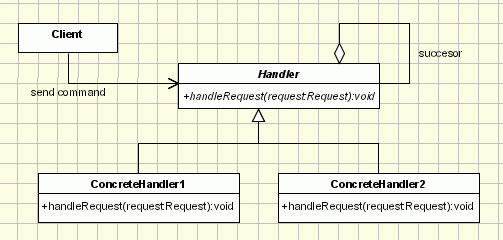Table Of Content
When we insert our ATM card into the machine and initiate a transaction, the ATM system employs the Chain of Responsibility pattern to handle our request, ultimately providing us with the requested cash. Now we have to implement a separate class for each request approver (Concrete Handlers) in this company. As a result, I have created a separate class for Team Leader, Project Leader, HR, and Manager. All these classes extend the “LeaveHandler” class and implement the “applyLeave” method within them. The Cocoa and Cocoa Touch frameworks, used for OS X and iOS applications respectively, actively use the chain-of-responsibility pattern for handling events. Objects that participate in the chain are called responder objects, inheriting from the NSResponder (OS X)/UIResponder (iOS) class.
Design Patterns in Python: Factory Method
Please look at the following diagram, which shows the reporting hierarchy in a software organization. The Team Leader reports to the Project Leader, and the Project Leader reports to HR. The Project Leader can approve leave for a maximum of 20 Days, and the HR can approve leave for 30 Days. First, as part of the DispatchNote() method, we calculate the number of 2000 notes to be dispatched.
Understanding the Chain of Responsibility Design Pattern
This current implementation necessitates passing the Request object through all the filters. However, what if we want to halt the propagation through the filter chain when a specific condition is met? A common example is during a web request, where we don’t want to continue processing if authentication fails.
Step 4: Client Code
The association of corporate social responsibility and sustainable consumption and production patterns: The mediating ... - ScienceDirect.com
The association of corporate social responsibility and sustainable consumption and production patterns: The mediating ....
Posted: Tue, 15 Aug 2023 07:00:00 GMT [source]
If the Team Leader has authority to take action on that request, he will process the and give the result (approved/ denied). If he does not have the authority, he will pass it to the next person (Project Leader) in the chain. Please create a class file named Handler.cs and copy and paste the following code. Here, you can see that we created one variable of type Handler (i.e., NextHandler), and this variable will hold the reference of the Next Handler. If this is not clear now, don’t worry; you will understand the need for this variable after a while. The concrete handler classes will implement this abstract DispatchNote() method.
Best of 2023: Top 9 Microservices Design Patterns - Cloud Native Now
Best of 2023: Top 9 Microservices Design Patterns.
Posted: Wed, 03 Jan 2024 08:00:00 GMT [source]

The example above minimizes the methods inside the Concrete Handler (increasing the cohesion) despite the constraint on a not null response. In this article, we’ll explain and demonstrate the Chain of Responsibility pattern. Indeed, this represents the contract of the Filter interface within the javax.servletpackage. A simple component can show brief contextual tooltips, as long as the component has some help text assigned. But more complex components define their own way of showing contextual help, such as showing an excerpt from the manual or opening a page in a browser.
References
We know that we can have multiple catch blocks in a try-catch block code. Here every catch block is kind of a processor to process that particular exception. So when any exception occurs in the try block, its send to the first catch block to process. If the catch block is not able to process it, it forwards the request to next object in chain i.e next catch block. If even the last catch block is not able to process it, the exception is thrown outside of the chain to the calling program.
In this example, the Chain of Responsibility pattern is responsible for displaying contextual help information for active GUI elements. He keeps quoting lengthy excerpts from the manual, refusing to listen to your comments. After hearing the phrase “have you tried turning the computer off and on again? ” for the 10th time, you demand to be connected to a proper engineer.
While the example below doesn’t solve all the CoR issues, it shows how the pattern can be easily restructured and adapted to different logic. If you are interested, you can use the following GitHub link to see my complete implementation of Chain of Responsibility pattern. As you can see on the UML diagram, it has 3 type of components named as, Client, Handler, and Concrete-Handler. When a user points the mouse cursor at an element and presses the F1 key, the application detects the component under the pointer and sends it a help request.
Open Source Web Application Framework
The application can attempt to authenticate a user to the system whenever it receives a request that contains the user’s credentials. However, if those credentials aren’t correct and authentication fails, there’s no reason to proceed with any other checks. The request is sent by the client, who then forwards it to the chain’s first handler.
This pattern encourages loose coupling between sender and receiver, providing freedom in how the request is handled. Unlike other behavioral design patterns, the Chain of Responsibility pattern creates a linear sequence or a chain of receiver objects for a request. Each receiver in the chain either handles the request or passes it to the next receiver. The primary advantage of using the Chain of Responsibility design pattern is that it decouples the sender and receiver of a request. This means that the sender doesn’t need to know the details of who handles the request, or how it’s handled.
Suppose we have to handle authentication requests with a chain of handlers. Depending on the type of authentication request, the appropriate handler in the chain handles it, or it is passed along the chain until a handler can process it or until the end of the chain is reached. These will be classes, and they should implement the EmployeeLeaveHandler abstract class and need to provide implementations for the ApplyLeave method.
If the processor is not able to process anything, it just forwards the same request to the next chain. Each linked handler has a field for storing a reference to the next handler in the chain. In addition to processing a request, handlers pass the request further along the chain. The request travels along the chain until all handlers have had a chance to process it. ➡ One of the behavioral design patterns.➡ Its main goal is to decouple the behavior of an object from its state by modeling the behavior into an abst... In chain of responsibility, sender sends a request to a chain of objects.
Each stage has a specific responsibility, and the order in which these stages are executed is crucial. This is precisely where the Chain of Responsibility Design Pattern comes into play. I will pass various level of support requests down the chain and they will be handled by correct level. Chain of Responsibility allows a number of classes to attempt to handle a request, independently of any other object along the chain.
If a particular object cannot handle that request, it will pass the request to the next object in that chain. In simple words, we can say that the chain of responsibility design pattern creates a chain of receiver objects for a given request. In this design pattern, normally, each receiver contains a reference to the next receiver. If one receiver cannot handle the request, it passes the same request to the next receiver, and so on.
First, create a class file named TeamLeader.cs and copy and paste the following code. As you can see here, first, we created one variable, i.e., MAX_LEAVES_CAN_APPROVE, to hold the maximum leave value the Team Leader can approve. This class implements the EmployeeLeaveHandler abstract class and provides the implementation for the ApplyLeave() method. As part of the ApplyLeave method, we check whether the Team Leader can approve the number of leaves the employee applies.





